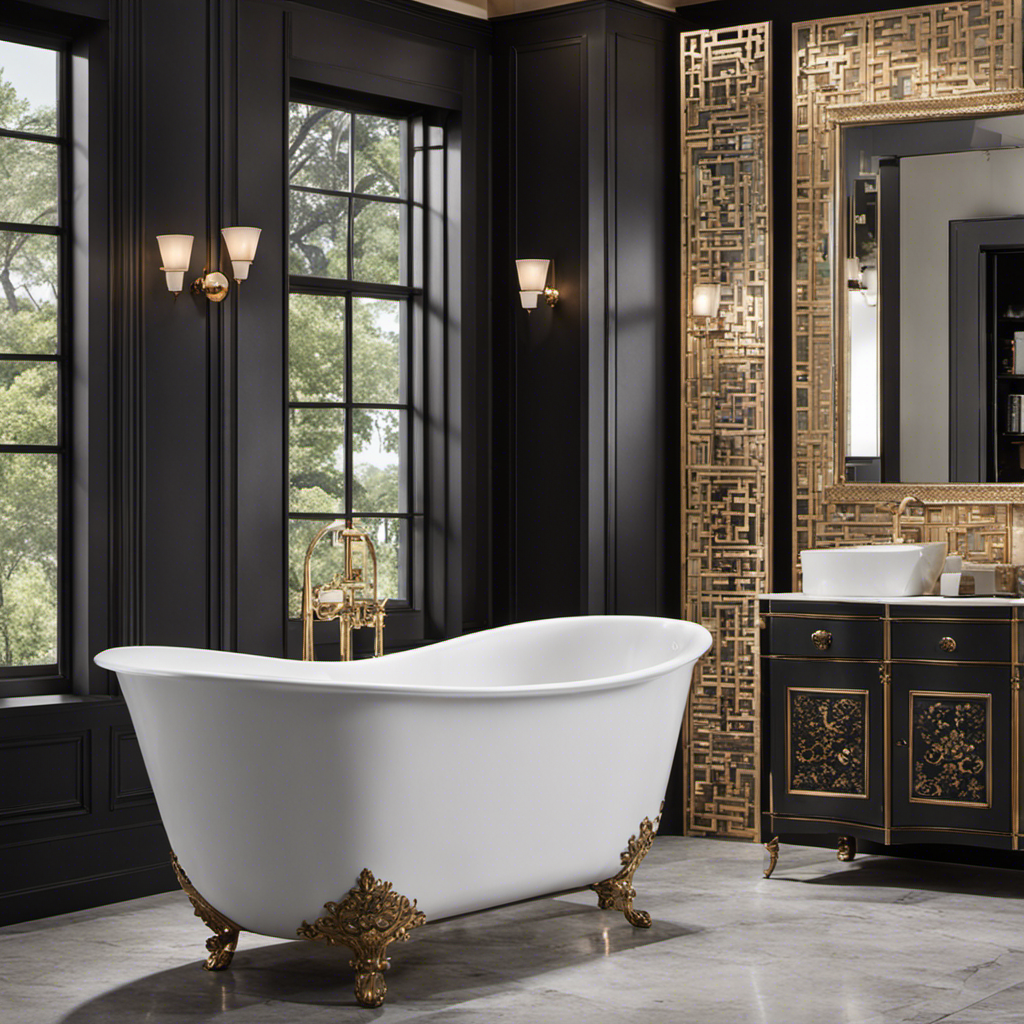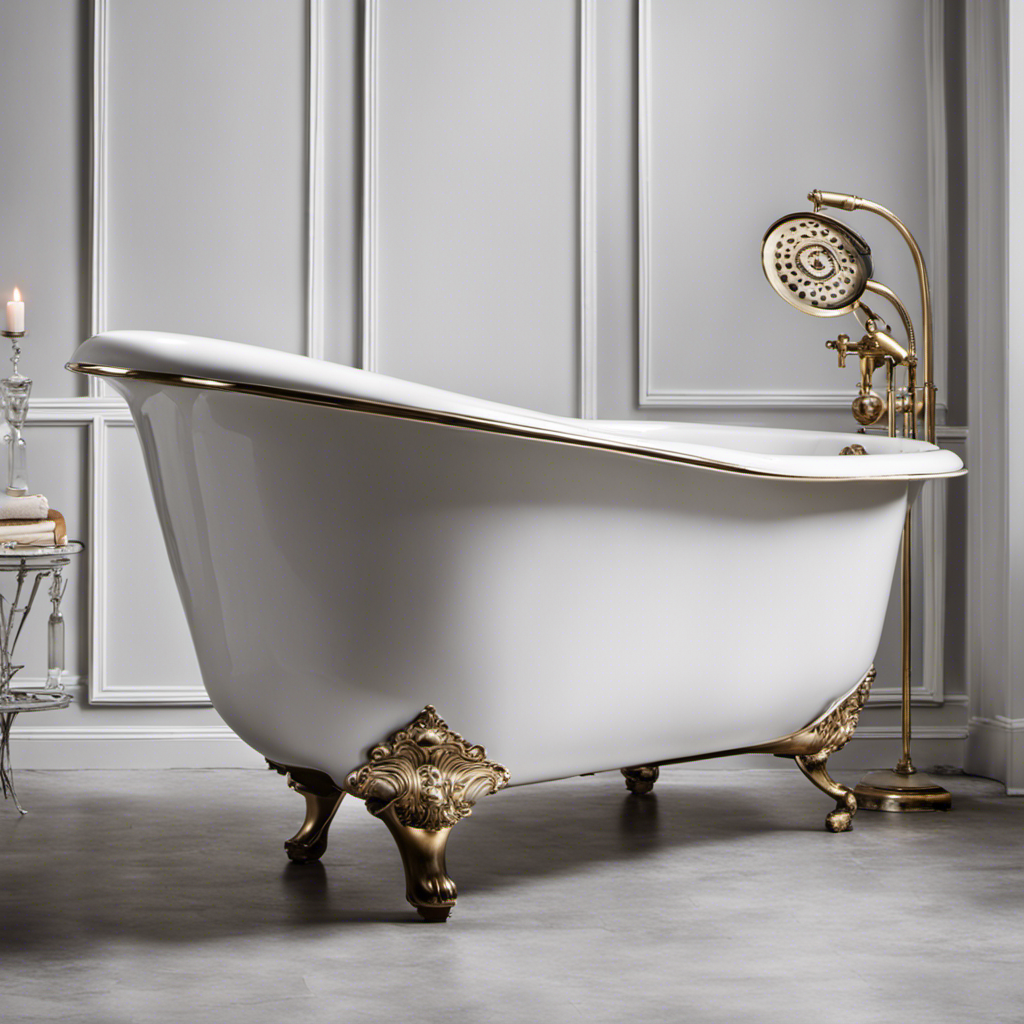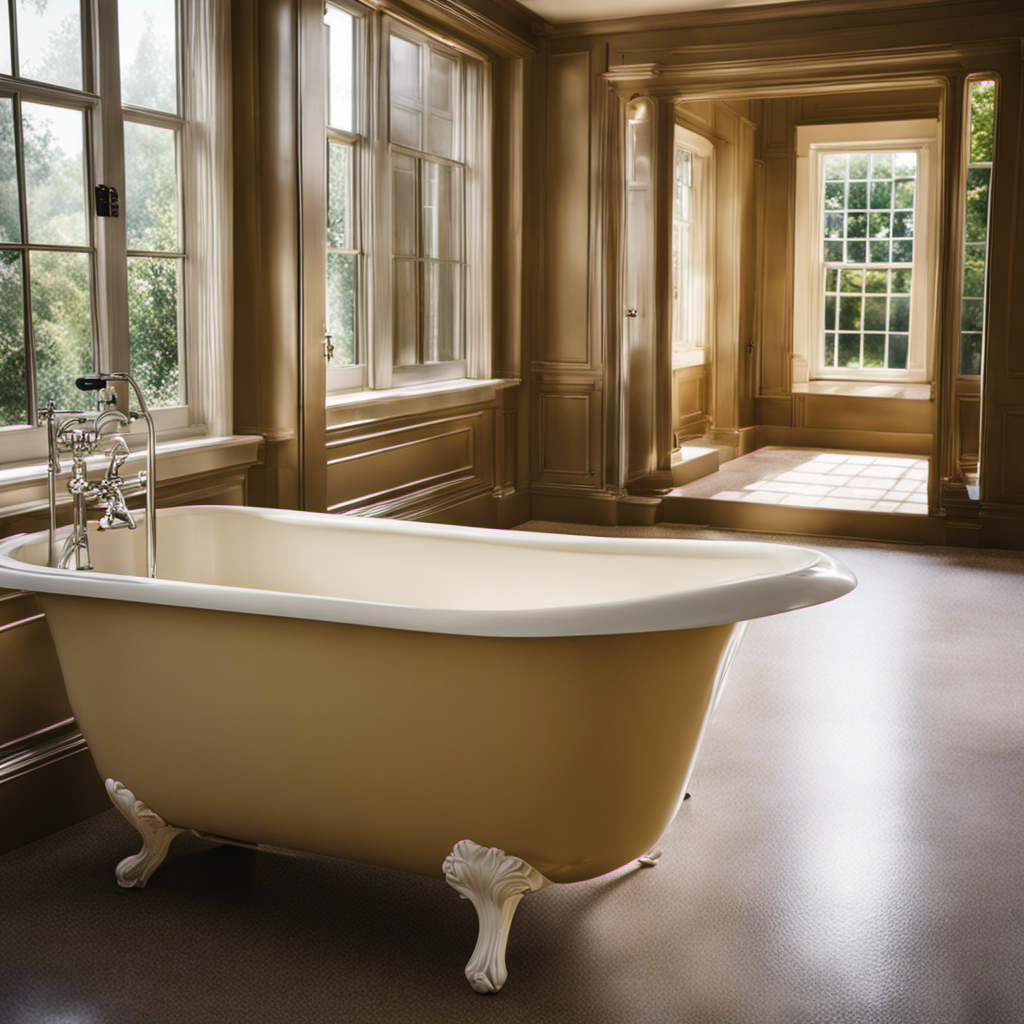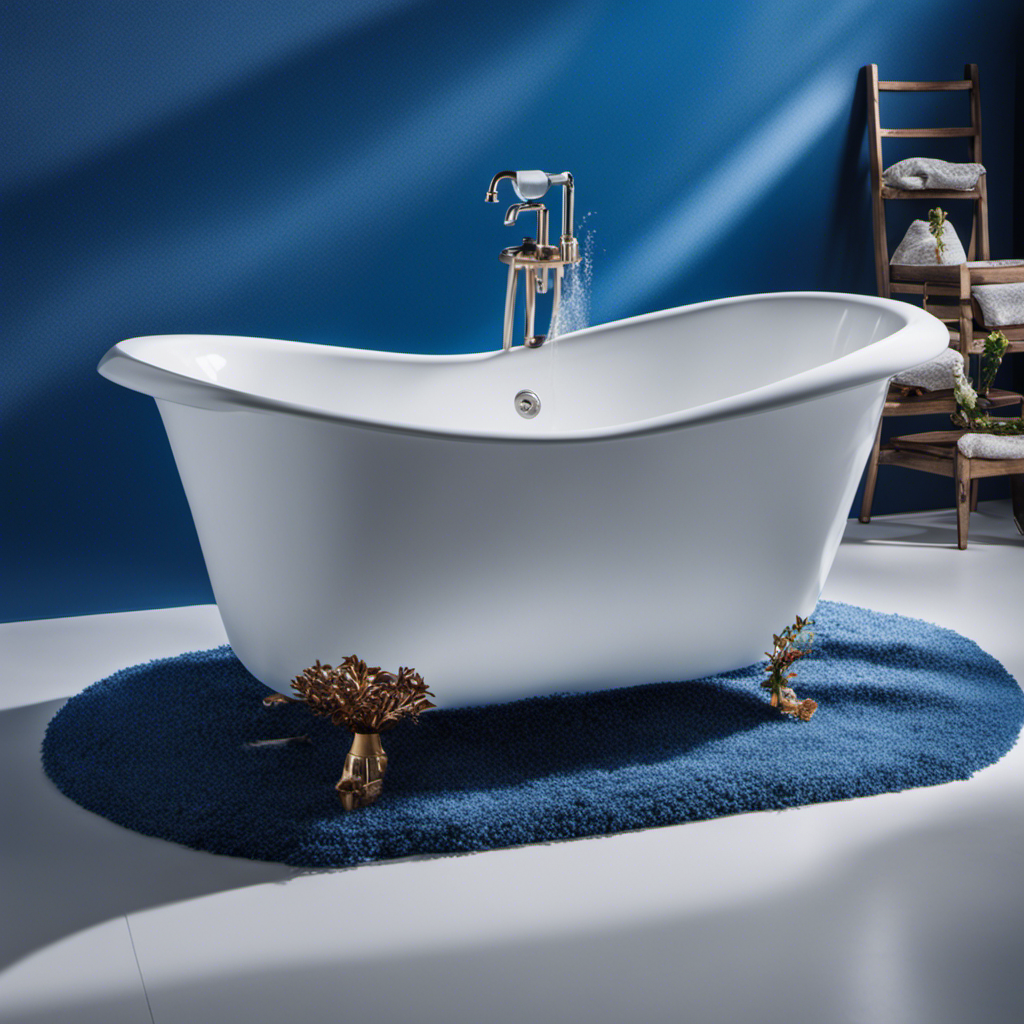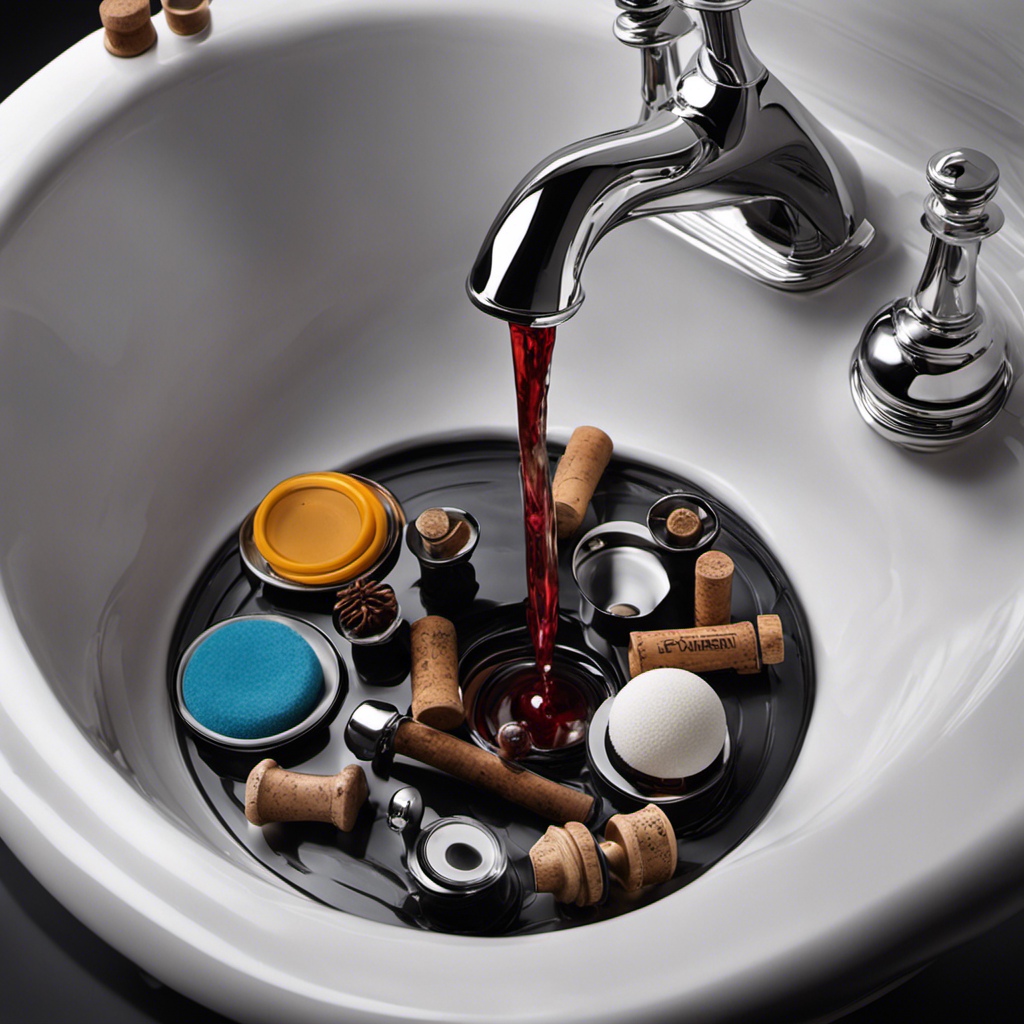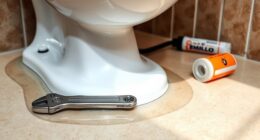I know it can be frustrating trying to figure out what kind of bathtub you have. With so many different materials, styles, and options out there, it can feel overwhelming. But fear not! In this article, I’m going to give you all the knowledge and guidance you need to confidently identify your bathtub.
From clawfoot to freestanding, drop-in to built-in, I’ll walk you through each type step by step. So let’s dive in and discover what kind of bathtub you have!
Key Takeaways
- Different types of bathtub materials include acrylic, cast iron, fiberglass, porcelain-enameled steel, and solid surface.
- Clawfoot bathtubs can be identified by their intricately designed feet, which can be made of cast iron or porcelain for antique versions and materials like acrylic or stainless steel for modern versions.
- Freestanding bathtubs have a modern and sleek appearance, can be placed anywhere in the room, and create a focal point in the bathroom.
- Drop-in bathtubs can be customized to fit any bathroom design, are easier to clean, but may be more expensive and not suitable for individuals with limited mobility.
Different Types of Bathtub Materials
Now let’s talk about the different types of bathtub materials you might come across.
One popular option is acrylic bathtubs. These bathtubs are lightweight and easy to install. They also come in a wide range of colors and styles, allowing you to customize your bathroom decor. However, acrylic bathtubs can be prone to scratching and can fade over time with exposure to sunlight.
On the other hand, we have cast iron bathtubs, which are known for their durability. These bathtubs are heavy and sturdy, providing a luxurious and solid feel. They also retain heat well, allowing for a longer, more relaxing soak. However, cast iron bathtubs can be more expensive and require regular maintenance to prevent rusting.
In terms of durability, cast iron bathtubs are a great choice, while acrylic bathtubs offer more flexibility in terms of design.
Identifying Clawfoot Bathtubs
To identify clawfoot bathtubs, take a look at the unique feet attached to the tub. These feet are the distinguishing feature of clawfoot bathtubs and can help determine whether you have an antique or modern clawfoot bathtub.
Antique clawfoot bathtubs typically have intricately designed feet made of cast iron or porcelain, while modern clawfoot bathtubs may have simpler, more streamlined feet made of materials like acrylic or stainless steel.
Restoring and maintaining clawfoot bathtubs require special care. Antique clawfoot bathtubs may need to be refinished to restore their original beauty, while modern clawfoot bathtubs may only require regular cleaning and maintenance.
It’s important to use gentle, non-abrasive cleaners to avoid damaging the surface of the tub and its feet. Regularly inspecting and repairing any cracks or chips in the tub is also essential to prevent further damage.
Recognizing Freestanding Bathtubs
Take a moment to examine the shape and design of the bathtub, as freestanding bathtubs often have a modern and sleek appearance. These types of bathtubs are a great option for small bathrooms as they can be placed anywhere in the room, maximizing the available space. The absence of walls or built-in structures allows for more flexibility in terms of layout and design.
Additionally, freestanding bathtubs create a focal point in the bathroom, adding a touch of elegance and luxury. When choosing the right faucet for a freestanding bathtub, it is important to consider the overall style and aesthetic of the bathroom. Opt for a faucet that complements the bathtub’s design and finish, while also ensuring it provides sufficient water flow and temperature control.
Understanding Drop-in Bathtubs
Understanding drop-in bathtubs is essential when designing a bathroom with a clean and seamless look. These types of bathtubs offer a sleek and modern appearance, making them a popular choice among homeowners.
Here are some pros and cons to consider when deciding on a drop-in bathtub:
Pros:
- Versatility: Drop-in bathtubs can be customized to fit any bathroom design and can be placed in various locations, such as against a wall or in a corner.
- Easy to clean: Since drop-in bathtubs are installed into a surrounding deck or platform, they are easier to clean compared to other types of bathtubs.
Cons:
- Cost: Drop-in bathtubs tend to be more expensive than other types of bathtubs due to the additional installation and customization required.
- Limited mobility: The built-in design of drop-in bathtubs may not be suitable for individuals with limited mobility.
When choosing the right drop-in bathtub for your bathroom, consider factors such as size, material, and style. Measure your space accurately and ensure that the bathtub will fit comfortably. Additionally, choose a material that is durable and easy to maintain. Finally, consider the style and design that will best complement your overall bathroom aesthetic.
With proper research and consideration, you can find the perfect drop-in bathtub for your bathroom.
Determining the Style of Built-in Bathtubs
Determining the style of built-in bathtubs can greatly enhance the overall aesthetic of your bathroom. Built-in bathtubs are a popular choice due to their seamless integration into the bathroom design. There are several common styles to choose from, each with its own unique features and benefits. To help you identify the style of your built-in bathtub, refer to the table below:
| Style | Description |
|---|---|
| Alcove | Three walls surround the bathtub |
| Corner | Fits snugly in a corner of the bathroom |
| Platform | Raised platform supports the bathtub |
| Drop-in | Bathtub is dropped into a cutout in the floor |
Now that you know the style of your built-in bathtub, it’s important to be aware of common problems and how to maintain and clean it. Some common issues include leaks, clogged drains, and discoloration. Regular cleaning with non-abrasive cleaners and proper maintenance can help prevent these problems. Additionally, inspecting the caulking and checking for any signs of damage or wear can help address issues early on. By understanding the style of your built-in bathtub and following proper maintenance and cleaning techniques, you can ensure its longevity and keep your bathroom looking beautiful.
Conclusion
So there you have it, a guide to help you determine what kind of bathtub you have. By understanding the different types of bathtub materials and recognizing the various styles, you’ll have a better idea of what kind of tub you’re dealing with.
And here’s an interesting statistic to leave you with: did you know that clawfoot bathtubs were first introduced in the late 19th century and became popular during the Victorian era? Imagine soaking in a tub that has been around for over a hundred years, steeped in history and elegance.
